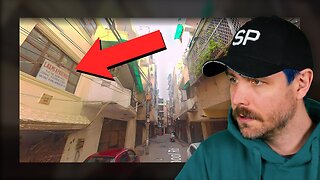How To Replace Your Tahoe's Front Stabilizer End Links In Less Than 10 Minutes!
Welcome to our channel! In this step-by-step tutorial, we'll guide you through the process of replacing the front stabilizer end links on a 2008-2020 Chevy Tahoe. This relatively straightforward DIY task can help restore stability and improve your vehicle's handling. Make sure to follow along closely, and if you have any questions, feel free to ask in the comments section below!
BUY New Front Stabilizer End Links for Your Chevy Tahoe: https://amzn.to/3PSjLIV
🔧 Tools Needed:
- Jack and jack stands
- Lug wrench
- Ratchet and socket set
- Torque wrench
- Pliers
- Penetrating oil (optional)
- Pry bar
⏰ Time Estimate: 10 Minutes each side
📝 Steps:
1. **Safety First**
- Ensure the vehicle is on a flat, stable surface and engage the parking brake.
- Wear safety goggles and gloves for protection.
2. **Lift and Secure the Vehicle**
- Use the jack to lift the rear of the vehicle and secure it with jack stands.
3. **Remove the Wheels**
- Use the lug wrench to loosen and remove the lug nuts, then take off the wheels.
4. **Locate the Stabilizer End Links**
- The stabilizer end links connect the sway bar to the suspension components. They are typically located near the rear wheels.
5. **Remove the Old End Links**
- Use a ratchet and socket set to remove the nuts securing the end links to the sway bar and control arms.
6. **Apply Penetrating Oil (if necessary)**
- If the nuts are rusted or stuck, apply penetrating oil to ease removal.
7. **Take Out the End Links**
- Use pliers to hold the stud from spinning while you unscrew the nuts.
8. **Install the New End Links**
- Insert the new end links and hand-tighten the nuts.
9. **Torque the Nuts**
- Use a torque wrench to tighten the nuts to the manufacturer's specifications.
10. **Reassemble the Wheels**
- Put the wheels back on and hand-tighten the lug nuts.
11. **Lower the Vehicle**
- Carefully remove the jack stands and lower the vehicle to the ground.
12. **Final Torque on Lug Nuts**
- Once the vehicle is on the ground, use a torque wrench to properly tighten the lug nuts.
13. **Test Drive and Check for Tightness**
- Take the vehicle for a short test drive to ensure everything feels secure. Afterward, re-check the nuts for tightness.
🔔 Don't forget to like this video if you found it helpful and subscribe for more tutorials on vehicle maintenance and repairs. If you have any questions or suggestions, let us know in the comments below. Thanks for watching!
[Disclaimer: This video is for educational purposes only. Always consult your vehicle's manual and follow safety guidelines.]
Disclaimer
Our videos are for entertainment purposes only. It is recommended that you seek advice or help from a qualified professional while attempting any and all repairs.
Do-it-yourself repairs can involve risk and injury, we assume no responsibility or liability for losses, damages, or injuries that include but are not limited to direct, indirect, special, incidental, actual, consequential, or punitive. All repairs performed by our viewers are at your own risk.
While we do review products that we use daily or have even used for years, we also review and test products for companies that have compensated us to try their product out. We are independently owned, the opinions expressed are our own from personal experience while using any and all products.
We are a participant in the Amazon Services LLC Associates Program, an affiliate advertising program designed to provide a means for us to earn fees by linking to Amazon.com and affiliated sites. Recommended products with links may be commission-based when products are purchased from them.
-
 15:52
15:52
Scammer Payback
1 month agoScammers Located in this Apartment
121K63 -
 10:41
10:41
Breaking Points
3 days agoARSON, 'FREAK OFFS', LUBE: Diddy Indictment SHOCKING DETAILS
81.6K42 -
 45:44
45:44
hickok45
13 hours agoSunday Shoot-a-Round # 247
52.2K51 -
 3:34
3:34
Cooking with Gruel
1 day agoBrown Butter Deviled Eggs
57.5K10 -
 11:06
11:06
Bearing
9 hours agoThe Office 2024 Australian Reboot Looks GARBAGE
59.1K17 -
 28:21
28:21
Lloyd And Mandy
13 hours agoThe INCREDIBLE Hack Every Online Business Owner MUST KNOW In 2024..
64.5K3 -
 0:51
0:51
scoutthedoggie
1 day agoWhat's in your Northeast UZI Rob?
49.1K2 -
 12:49
12:49
Misha Petrov
22 hours agoI Triggered The Furries…
78K73 -
 6:22:05
6:22:05
Akademiks
23 hours agoNicki Minaj EXPOSES Jay Z over Finessing HER! Diddy got all his Peers Hiring Lawyers & on the RUN!
168K89 -
 1:04:17
1:04:17
WarRoom Films
10 days agoGovernment Gangsters - WarRoom Film
341K70